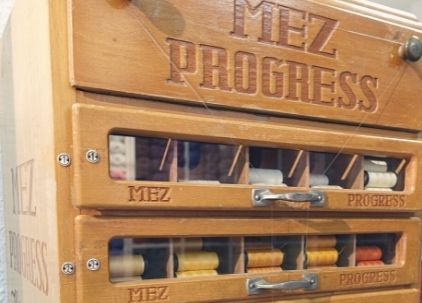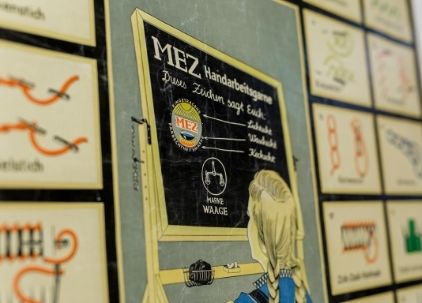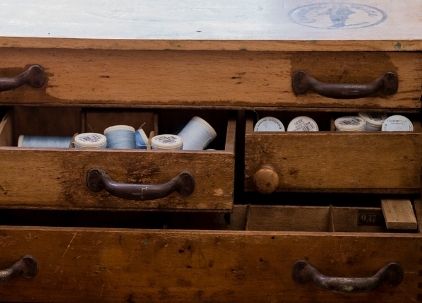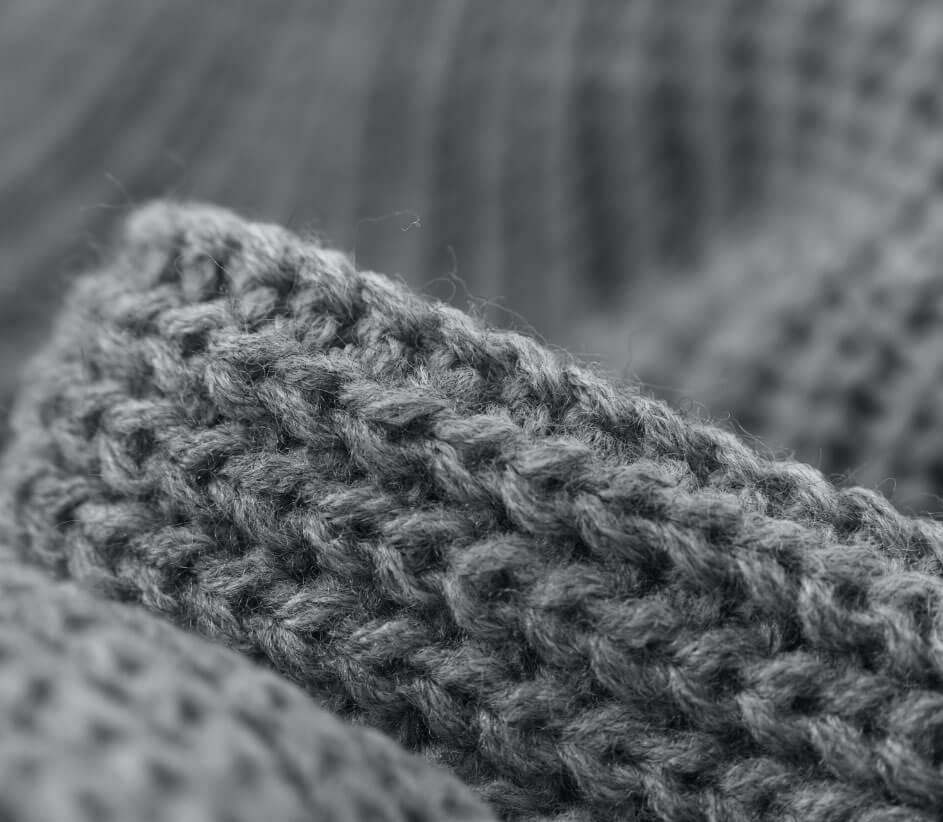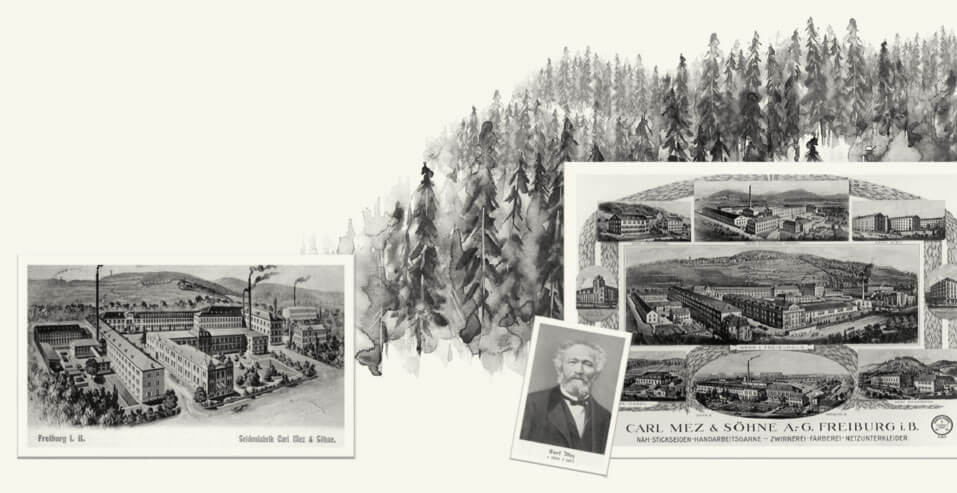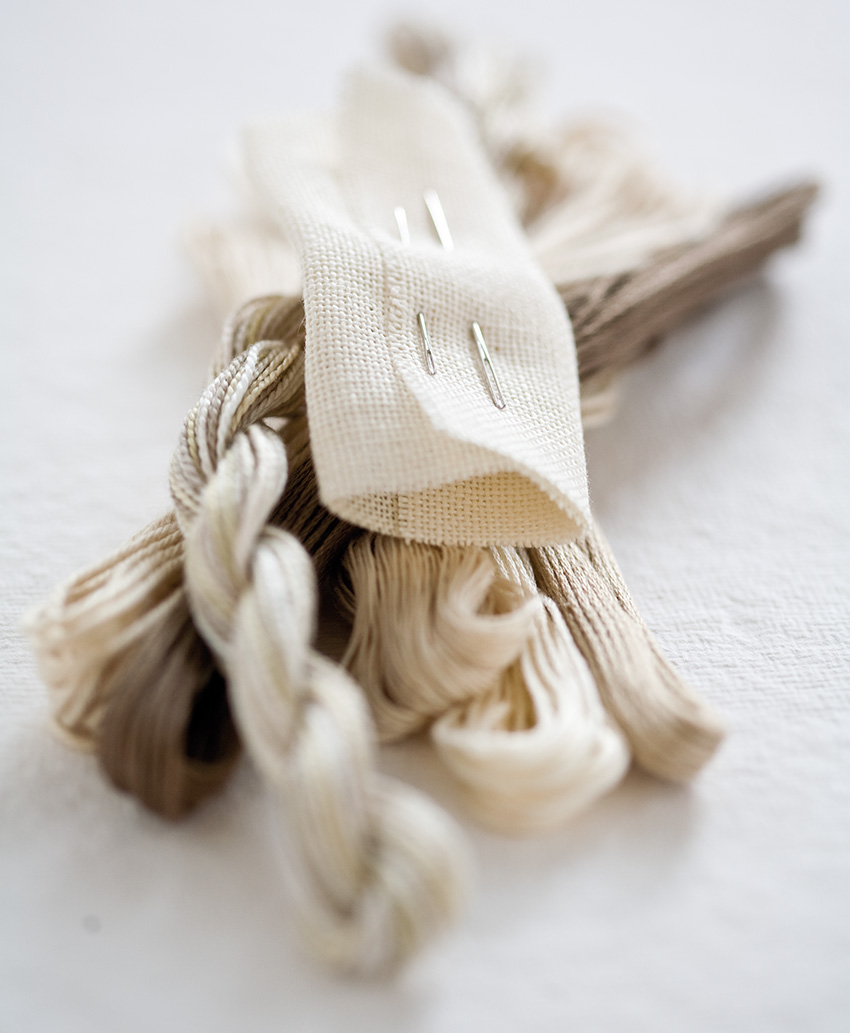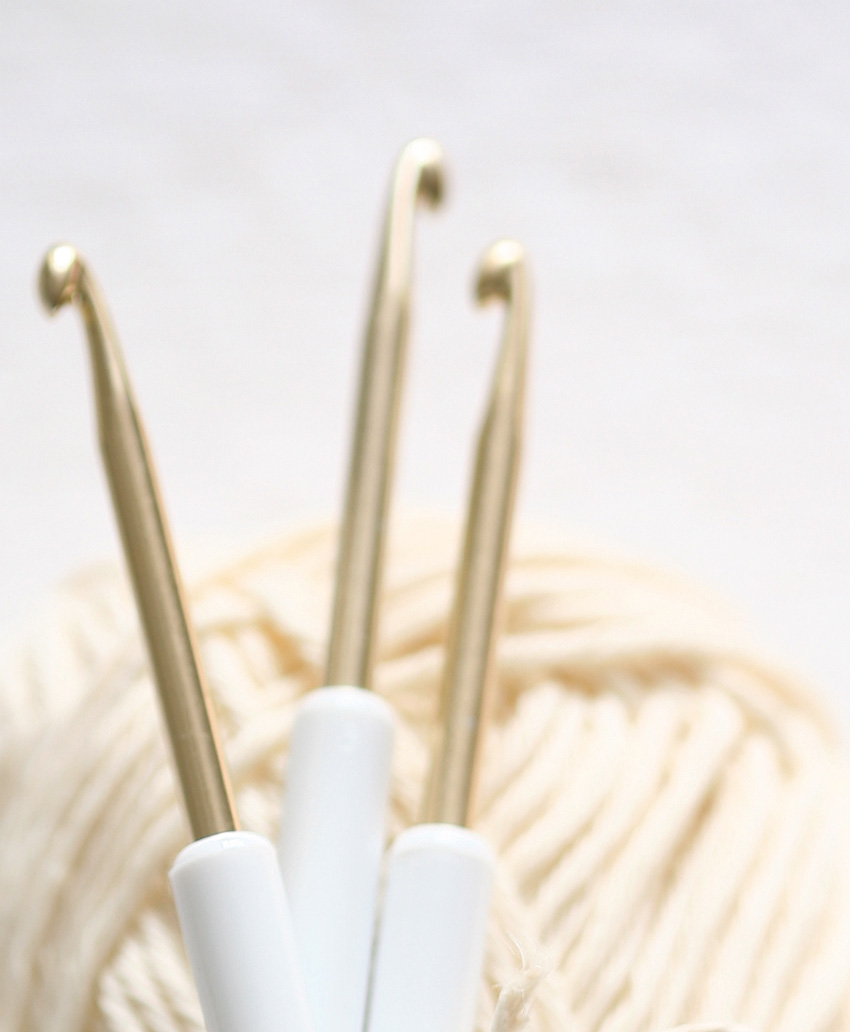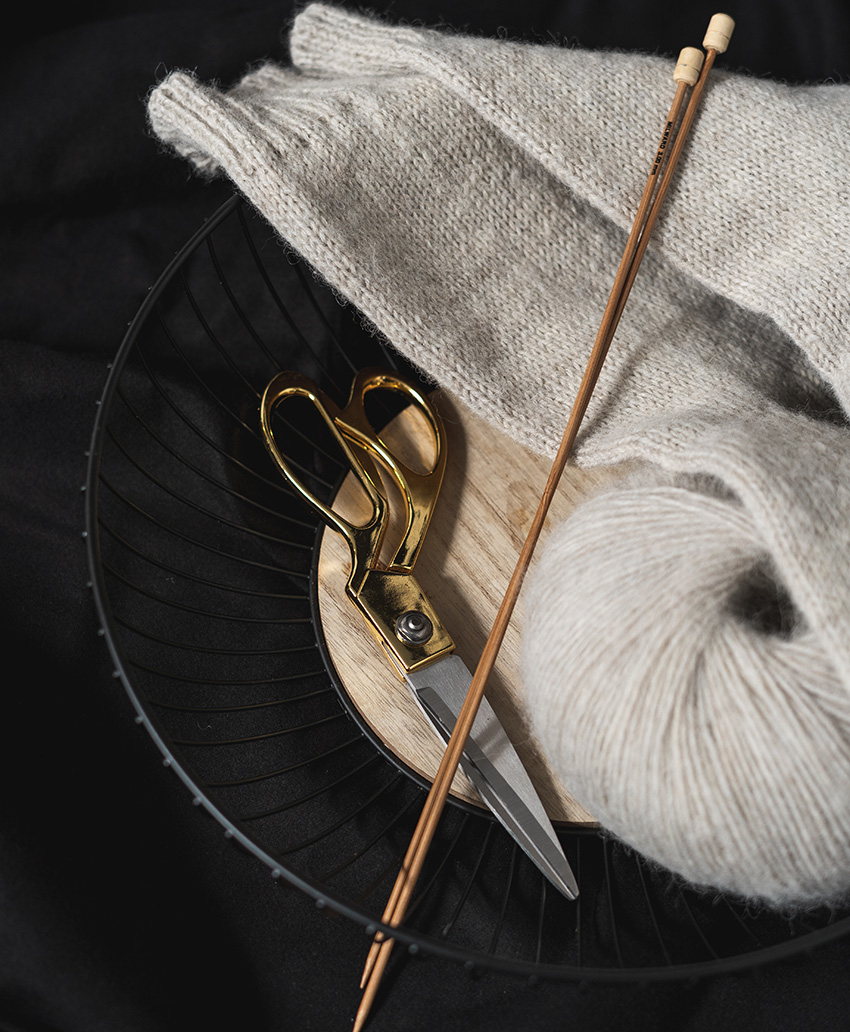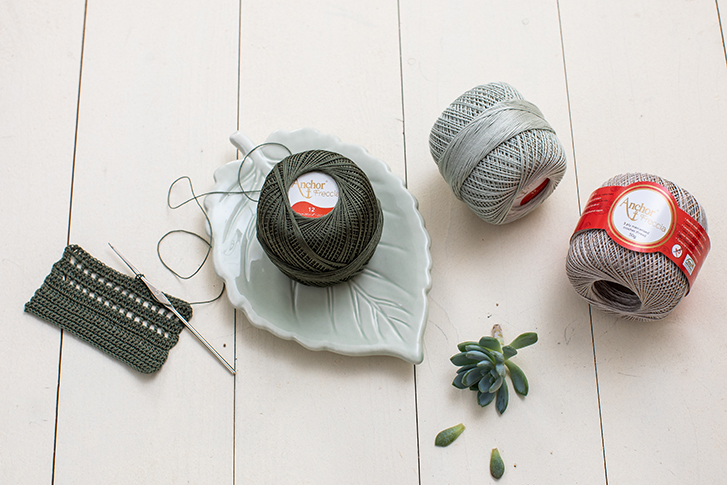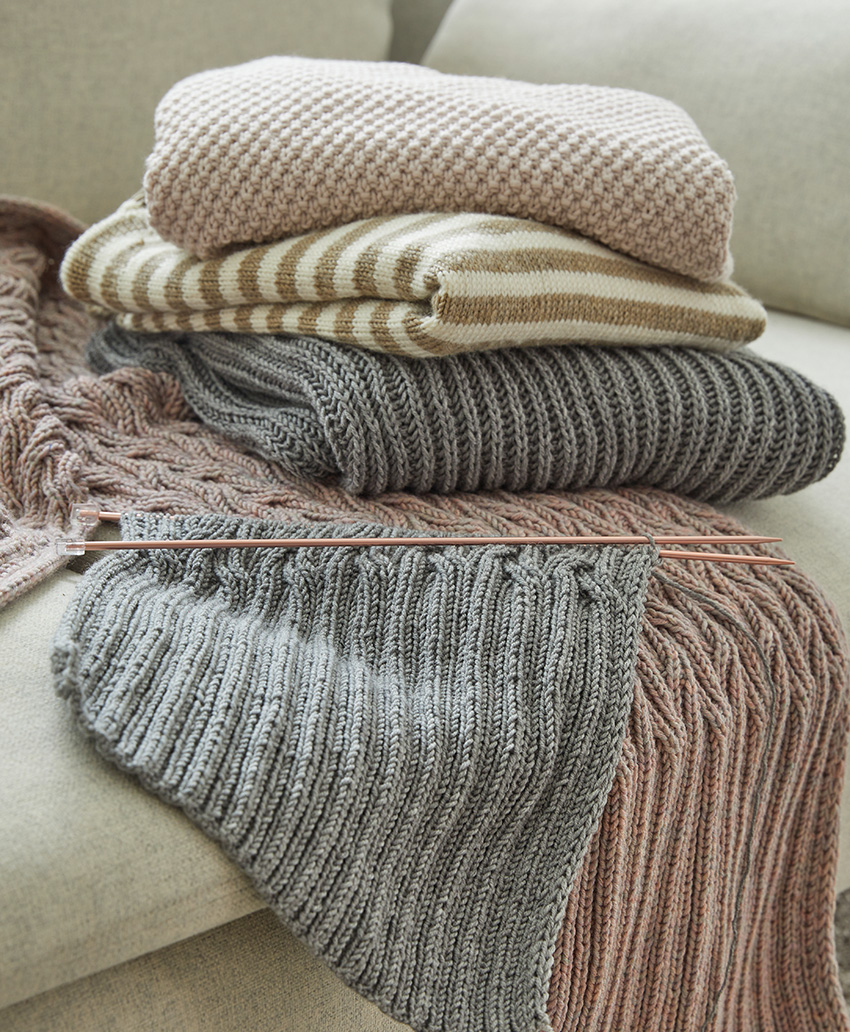“Knitted” or needle-bound gloves were the norm for liturgical procedures as early as the 9th century. Needle-binding involves incorporating several load-bearing threads into weaving patterns. Knitting, on the other hand, involves working with one continuous thread. Differentiation: While knitwear unravels, needle-binding forms an undetachable knot.
The technique of knitting originated around the 13th or 14th century. It came from the Middle East via the Silk Road to Italy and was primarily confined to the high social classes. In Paris, commercial knitting was first mentioned in 1268 with the Paris Knitters’ Guild. Illustrations from the High Middle Ages: simple circular knitting depicted by a rendition of the Virgin Mary knitting. There are records of knitting guilds in the Netherlands and Spain from the 15th century. From the 15th and 16th centuries onwards, there is evidence of the various guilds in Germany. Invention of the first functional hand-knitting loom by William Lee in 1589. Gradually, knitting developed into an affordable technique with which to produce inexpensive clothing. It was not until the middle of the 19th century that knitting spread to Japan and China. During the Second World War, most women engaged in knitting, as less wool is needed than for crochet. For amateur and home knitters, a number of small mechanical knitting machines have been available since the 1950s, and electric and later computer-controlled home knitting machines since the 1970s.
Today, knitting is the most widespread form of needlework in Europe and major fashion houses as well as boutiques and designers launch their autumn/winter knitwear collections every year in glamorous fashion on the global catwalks and catalogs.
Technik des Strickens entstand etwa im 13. bzw. 14. Jahrhundert. Aus dem Nahen Osten über die Seidenstraße bis nach Italien und war vor allen Dingen der hohen gesellschaftlichen Schicht vorbehalten. In Paris wird 1268 zum ersten Mal das gewerbliche Stricken in Form der Gilde der Pariser Stricker erwähnt. Abbildungen des Hochmittelalters: einfaches Rundstricken in Form einer strickenden Maria. Aus dem 15. Jahrhundert stammen Beurkundungen für Strickgilden in den Niederlanden und Spanien. Ab dem 15. und dem 16. Jahrhundert finden sich Deutschland Belege der unterschiedlichen Zünfte. Erfindung des ersten funktionsfähigen Handkulierstuhls von William Lee im Jahr 1589. Nach und nach entwickelte sich das Stricken zu einer erschwinglichen Technik, die günstige Kleidung in die Produktion brachte. Erst Mitte des 19. Jahrhunderts verbreitete sich das Stricken in Japan und China. Während des zweiten Weltkrieges strickten die meisten Frauen, da weniger Wolle gebraucht wird als beim Häkeln. Für Heim- und Hobbystricker gibt es seit den 1950er Jahren eine Anzahl kleiner mechanischer Strickmaschinen, seit den 1970er Jahren elektrische, später auch computergesteuerte Heimstrickmaschinen.
Heutzutage ist das Stricken die am meisten verbreitete Handarbeitsform in Europa und große Modehäuser sowie Boutiquen und Designer:innen bringen jährlich ihre Herbst/Winter Strick-Kollektionen glanzvoll auf die globalen Laufstege und in Kataloge.
